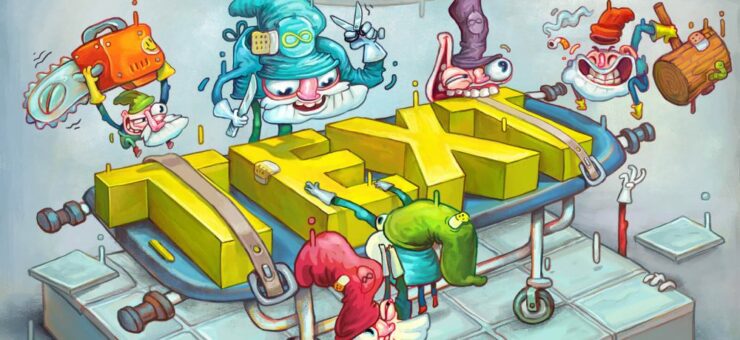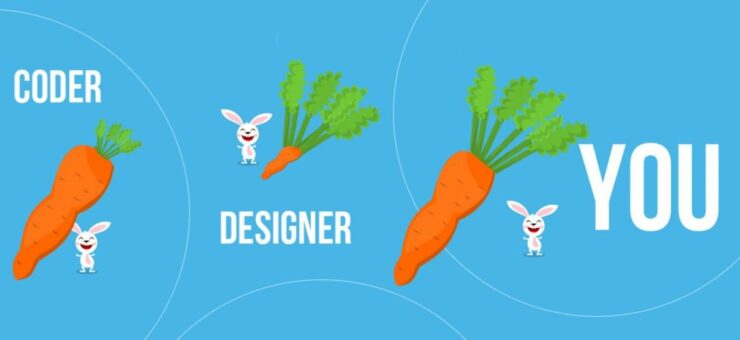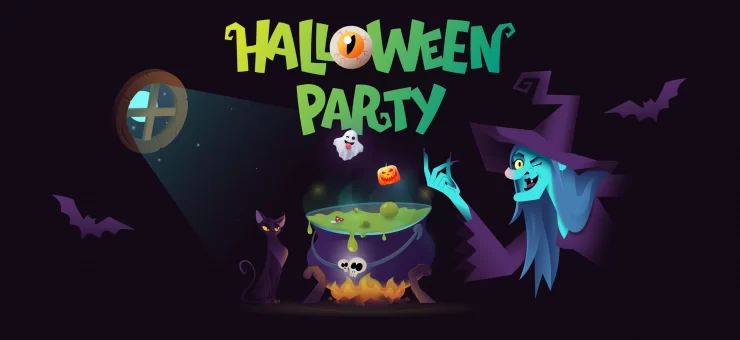Creating a UI/UX design for a dating app is tough. You should keep up with key trends, consider established patterns, follow competitors and understand human psychology.
We’ve been in those shoes.
At our UI/UX design agency, we created designs for several dating apps. We wrote this article to summarize months of our research and experiments.
Check out this list of 10 dos and don’ts of solid and effective UI/UX design, paired with real-world examples like Tinder or Bumble.
Table of content
Dos
Do those things to create a human-centered and easy-to-navigate interface for a dating app.
1. Use common design patterns
Dating should be natural and easy, and so should a good dating app. Users should glance at the screen and understand everything without pondering much.
Design patterns help to predict user behavior and come up with a solution to common design problems. What is the easiest way for users to browse potential matches and show interest? The answer is swiping.
Left-right swipe is an innate gesture that most dating apps use. Users make a billion left and right swipes on Tinder every day, why try to reinvent the wheel?
That’s how we approached one of our projects. Navigation icons in the lower part of the screen suggest where to swipe if you want to connect with a person:

2. Focus on the user profile
UI/UX design is not about the profit but user experience. To build a human-centered dating app, it’s important to focus on end-users and their needs.
Dating apps are a hub for diverse groups of people with different interests and partner preferences. To help people find the best match, let them present and identify themselves in any way they want.
Voice memos? Ten pictures with a dog? Quote from a favorite poet? Stuck-in-the-head Spotify song? Give users as many opportunities to express themselves as they want.
Let’s look at one of our cases as an example. For Penguin Dating, we designed a short and fun questionnaire with multiple-choice questions. Our developers created a compatibility algorithm that matches profiles with similar answers.

3. Use recognizable branding
People memorize colors, logos, mascots, or illustrations. A compelling visual element that distinguishes the app from others is branding. Regarding UI design, here are the four key branding elements: logo, color palette, lettering, and unique illustrations.
Some dating apps also develop mascots (a frog from the Once app) or recognizable icons (a flame on Tinder).

For the Penguin Dating app, we used a penguin as a symbol of loyalty and devotion. The mascot appears in the app’s icon and greets users in the onboarding flow.

4. Show the user’s progress bar
Users are comforted by knowing how long an action is taking. Consider adding a progress bar to show this.
We implement progress bars in all our projects with long registration processes, for example, for registration screens. This way, users know how many questions are left until they can start swiping:

Bumble shows a percentage progress bar in users’ profiles to motivate them to complete the tasks and add more information.

5. Make the process exciting
Imagine, all you do is look at selfies and swipe left or right. We bet after 10 minutes you will become bored with this monotonous activity.
That’s where gamification elements spice up the user’s experience and make the process more engaging. The strategies can be diverse: progressing to different levels, scoring points for matches, and messages or activity feeds with updates from potential partners.

When developing Penguin Dating, we wanted to motivate people to meet with their matches. So we created a game where users go on real-life dates to compete for prizes.

Don’ts
Try to avoid these common designer mistakes when developing a dating app.
1. Don’t locate elements in hard-to-reach zones
The way users hold the phone is not rocket science. Many use only one hand and move a thumb on the screen.
A thumb-friendly zone is the most comfortable area to reach with a thumb. Usually, designers try to place primary elements (profiles or multiple-choice questions) in the center while leaving a secondary level along the bottom for buttons and quick actions.

Look at our example: the image on the right is an actual screen from the Penguin Dating app, and our designers created the left pic to show how the interface would look if you ignored the thumb-friendly rule.

2. Don’t underestimate the power of colors
Color plays a vital role in branding, marketing, design, and accessibility of the dating app.
First, colors have powerful associations that can incite emotion and communicate a company’s values. As we’ve worked mostly with European clients, here are some common perceptions about colors we keep in mind when designing. Red is traditionally perceived as a color of love and passion. Yellow signifies joy, while black is mourning and emptiness.
Let’s look at the logos of the leading players in the dating app game. They use bright colors: pink, yellow, blue, and purple, to create an association with positive emotions. Joy, love, happiness. They all use white text or strokes like OkCupid to make the brand name distinct and readable.

Then, users with vision impairments can perceive colors differently. If you want your interface to be truly inclusive and human-centered, it is important to consider different types of users.
A good place to start is Web Content Accessibility Guidelines (WCAG), an international standard for accessible web content. It provides guidelines on the use of color in UI designs. For example, one of the recommendations is using a 3:1 contrast ratio with surrounding text to make it easy to read. Find more about web design accessibility here.
Most dating apps use bright background colors with large dark text in interfaces. That’s what we did for one of our projects.

3. Don’t leave users alone after the match
Nothing is scarier than the first message to your potential match. Users’ minds usually spiral: what should I say? Give a compliment? Introduce myself? Ask for a number?
A thought-out interface design can help users break the ice and start a chat. First, consider adding conversation starters that lead to an easy-going chat with a match.

Then, consider how to make the interface more suggestive. Some popular ideas are displaying new matches at the top or adding the “expiration” timer, like Bumble.
That’s what the chat interface looked like for one of our projects. We added a gift icon on the right side for users whose love language is gift-giving. The icon will lead them to a catalog with presents that will be delivered in the real world.

4. Don’t follow design trends blindly
Let’s be honest: Design trends come and go. If you don’t want your dating app to become outdated within a year, you better not follow all popular design trends.

However, great designers don’t just ignore design trends; they study and use them as an inspiration for future projects. Try to find what hasn’t become a cliché yet and what fits into your style and brand identity. Minimalism, 3D content, motion graphics, and inclusive visuals are our current favorites.

5. Don’t jeopardize the user’s safety
Users entrust their hearts, minds, and personal data to dating apps, and we recommend treating it with respect and care.
The role of UI designers is to give users a feeling of safety. It can be done in different ways.
Many dating apps, including Tinder and Bumble, allow users to verify profiles by uploading a selfie. Seeing a blue checkmark in someone’s profile means that their photos are real and you’re not talking to a catfish. Another way to create a safe feeling is to report or block sketchy matches.

Imagine matching on a dating app with your boss or seeing the active profile of your brother-in-law. Ugh… To avoid awkward situations like that, Tinder allows users to block contacts in the app.

Final thoughts
UI/UX design is a major factor in the success of the dating app. It contributes to the branding identity of the product, creates a positive user experience, and stands for your solution. This means taking time to learn the best, and not-so-great practices is essential. By following these dos and don’ts, you can be sure your UI/UX design is heading in the right direction.
About the author
Aleks is the founder of Purrweb. Over the last 8 years this agency has designed and developed more than 300 MVPs for clients from all over the world.



